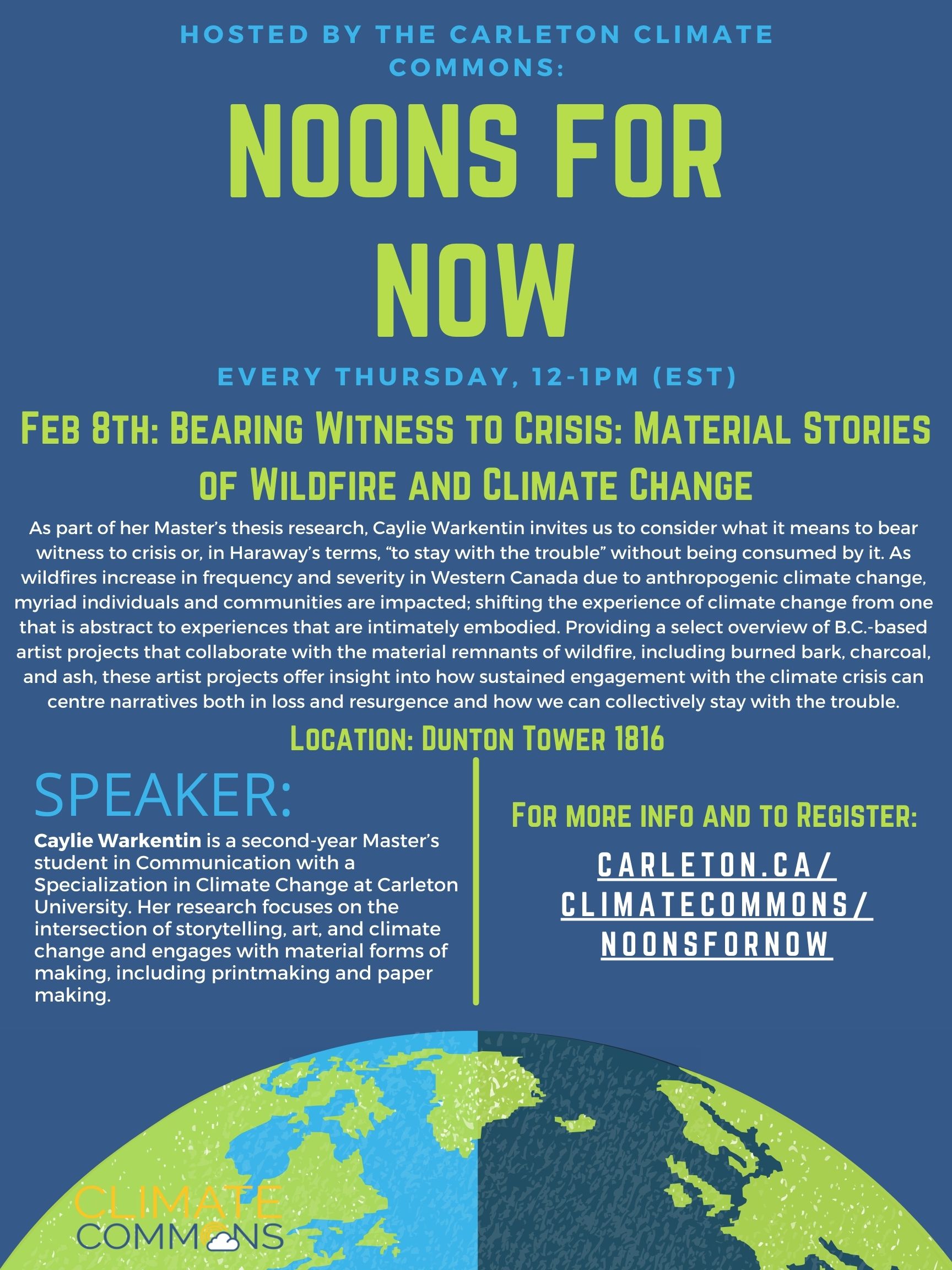 As part of her Master’s thesis research, Caylie Warkentin invites us to consider what it means to bear witness to crisis or, in Haraway’s terms, “to stay with the trouble” without being consumed by it. As wildfires increase in frequency and severity in Western Canada due to anthropogenic climate change, myriad individuals and communities are impacted, shifting the experience of climate change from one that is abstract to experiences that are intimately embodied. Providing a select overview of B.C.-based artist projects that collaborate with the material remnants of wildfire, including burned bark, charcoal, and ash, these artist projects offer insight into how sustained engagement with the climate crisis can centre narratives both in loss and resurgence and how we can collectively stay with the trouble.
As part of her Master’s thesis research, Caylie Warkentin invites us to consider what it means to bear witness to crisis or, in Haraway’s terms, “to stay with the trouble” without being consumed by it. As wildfires increase in frequency and severity in Western Canada due to anthropogenic climate change, myriad individuals and communities are impacted, shifting the experience of climate change from one that is abstract to experiences that are intimately embodied. Providing a select overview of B.C.-based artist projects that collaborate with the material remnants of wildfire, including burned bark, charcoal, and ash, these artist projects offer insight into how sustained engagement with the climate crisis can centre narratives both in loss and resurgence and how we can collectively stay with the trouble.
Speaker: Caylie Warkentin is a second-year Master’s student in Communication with a Specialization in Climate Change at Carleton University. Her research focuses on the intersection of storytelling, art, and climate change and engages with material forms of making, including printmaking and paper making.
Actions
- Make art
- Engage actively and passionately with art
- Slowing down and seeing collectively at exhibitions
- The act of “Slow-Making” (Caylie Warkentin)
- Thinking of climate as disruptive/destructive and creative
- Thinking of how art can capture all the senses
- Consider how art is mediated through digital technologies
- “How can climate be something you can pick up or touch?” (Caylie Warkentin)
Resource List
The following is a list of resources recommended by attendees at our event.
Art:
- The weavings were created by Ana Diab. This is the link to the weavings on her website: https://www.anadiab.com/portfolio/evacuation-routes
- The tree prints are created by Casey Macauley. He doesn’t have a website, but has been documenting his work on his Instagram page @/aragornarts.
- The flask is created by Avi Farber. The specific flask Caylie showed is featured in this article by Emily Carr University: https://www.ecuad.ca/news/2021/avi-farber-forges-connection-with-wildfire-and-clay This is his website: https://www.avifarber.com
Books on Reconfiguring our Relationship with the world:
- Donna Haraway’s Staying with the Trouble
- Anna Tsing’s The Mushroom at the End of the World
- Arts of Living on a Damaged Planet (Editors: Anna Tsing, Elaine Gan, Nils Bubandt, Heather Swanson)